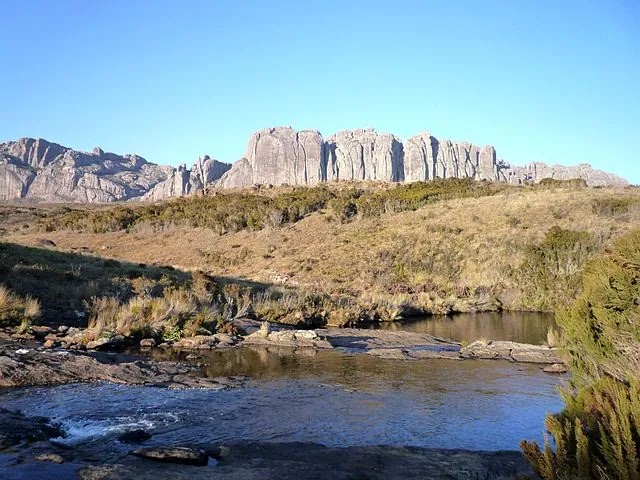Andringitra National Park is in the Haute Matsiatra region of Madagascar. It is 47 kilometers (29 mi) south of Ambalavao. The authority established the park in 1999.
The Madagascar National Parks Association manages it. In 2007, they inscribed it as part of the Rainforests of the Atsinanana World Heritage Site.
Explorers noted the area’s importance in the early 20th century. In 1927, they declared the central part of the mountain range a Strict Nature Reserve.

The Malagasy Environmental Action Plan introduced an idea during the early 1990s. This idea was about Madagascar taking ownership of the environmental agenda.
This agenda was a notable shift away from relying on donors, without any doubt. This area became a National Park in the year 1999.
More Information About Andringitra National Park
This park became part of the Rainforests of the Atsinanana World Heritage Site in 2007. The reserve covers 31,160 hectares (77,000 acres).
It covers much of the granite massif of the Andringitra mountains. The mountains rise above the plains. The reserve’s altitude varies.
The mountain ranges from 700 to 2,658 meters. The peak, Imarivolanitra, is the country’s second-highest mountain.
The reserve receives 1,500–2,500 millimeters (59–98 in) of rain each year. Snowfall happens in some years. Here, authorities have recorded that Madagascar’s lowest temperature is -8 °C.
The Iantara, Ampanasana, Menarahaka, and Zomandao rivers run through this fantastic reserve. Three different groups of people live within this great park.
The people of the Bara community graze cattle on the savannah in the valleys and the ridges. It is on the south and west side. The Bara Haronga grows rice in the east.

The people of the Betsileo community have developed an irrigation system on the north mountain flanks. These people use it for rice cultivation.
The park is one of Madagascar’s most biologically diverse places. It has many species that are only available there.
The massif’s eastern flank has a humid forest, with humid grassland and scrub higher up. The western flank has a relatively dry forest.
The park is home to over one thousand plant species. It also houses one hundred bird species and fifty-five frog species.
More than fifty species of mammals are available here, including thirteen species of lemur. The ring-tailed lemurs have thicker fur than the rest of the population.
It is likely an adaptation to the colder climate at high altitudes. The Andringitra massif is one of the most beautiful parks in Madagascar.
It offers incredible natural wealth. It is open to all. Those who love large spaces and mountain walks won’t find any disappointment.
A panoramic view awaits them. The park is difficult to access (only 4×4). It offers an exceptional wet rainforest. Visitors also have the opportunity to climb Peak Boby, which reaches 2,658 meters.
Andringitra offers many landscapes. It has meadows, small forest islands, thickets, and large expanses. The show is breathtaking.
An exceptional surprise punctuates it: the Riambavy, a 300 m high waterfall. According to legend, bathing in these waters would bring fertility.
The surroundings of Andringitra Park also offer a rich cultural itinerary. It will make you discover endearing people anchored in ancestral traditions.
Go on a 2-3 day trek in an exceptional setting. The massif offers various activities, including trekking, in an exuberant, incredible nature.
Birdwatching, camping, and trekking are the main activities in this park. Climbing Pic Boby is a must-do when you go to Andringitra, without any doubt.
But, wear warm clothes because it can be cold at night. For the most adventurous, the site offers climbing. It is a sporty trip, rich in adventure and discovery.

Note that you can also bivouac under tents. The dry season is the best time to visit Andringitra Park from April to December.
However, even during the dry season, it rains in Madagascar every week. July and August are the best time for hiking. September and October can be hot.